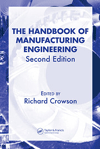"Manufacturers of electric automobiles, laptop computers, cell phones, power tools and other hybrid microsystems will likely all benefit from this kind of technology," says Scott Vaupen of Sandia California's Business Development Department.
"Currently, no device exists that is altogether small, robust, long lasting, and high-powered enough to meet the requirements of hybrid microsystems," says Jim Wang, manager of the Analytical Materials Science Department at Sandia. "Electronics designers are forced to use low power-consumption components and designs that are limited in their longevity. Our newly discovered anode materials can improve the performance of micro-systems by allowing for more powerful, sophisticated electronic components and by reducing the size and weight of the overall system."
Wang said researchers have, for years, been vexed by the capacity limits associated with traditional lithium battery anodes. Sandia turned to silicon, which offers more than 10 times the lithium capacity potential of graphite.
Sandia researchers acknowledge that the new material has some vulnerabilities. Silicon undergoes a rapid capacity loss during the battery cycling phase. But when small particles of silicon are combined within a graphite matrix, the large capacities are retained. The complete elimination of fading of long-term cycling capacity in the silicon-based electrodes may not be possible, but it can likely be minimized by the design of the carbon-silicon composite microstructure. Still, Wang is confident that the silicon and graphite electrode materials have set the bar for future breakthroughs. "We believe that only other silicon-containing electrode materials can compete with the large capacities that our silicon and graphite composites have demonstrated," says Wang.






